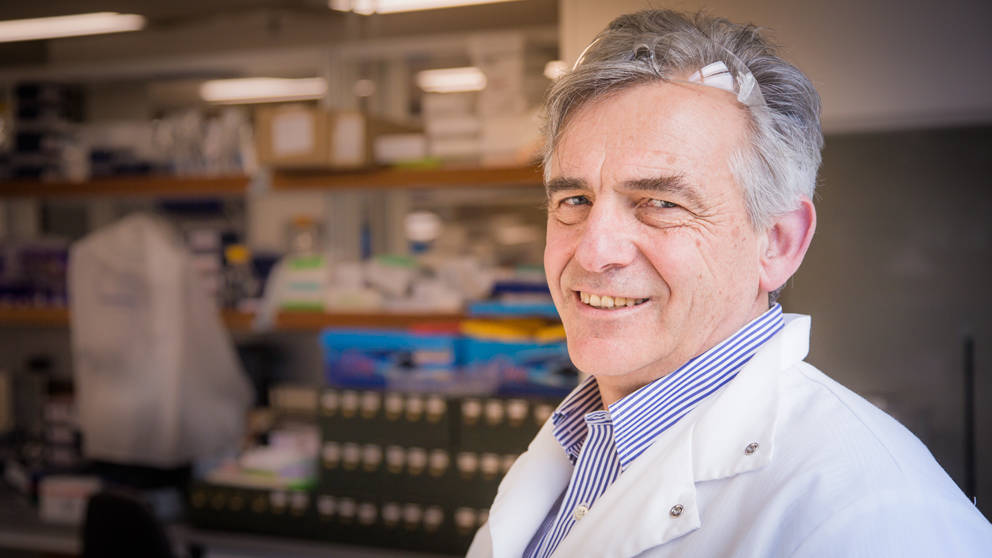Summary
Human pluripotent stem cells have enormous potential as research tools and as a platform for creating new therapies. However, use of the human stem cells in these applications depends on our ability to propagate them efficiently in a pure form. In this study, a team led by JAX Professor Martin Pera, Ph.D., discovered a minority population within human stem cell cultures that can both produce more stem cells and differentiate into any type of body cell, and they correspond to cells in the primate embryo just after it implants into the womb. Defining the characteristics of this special subpopulation of cells will help scientists to produce specialized tissue for research and therapy development in a more effective and efficient fashion.
 JAX Professor Martin Pera, Ph.D., studies the genetic basis of individual differences in the response of the central nervous system to injury. JAX photo by Tiffany Laufer.
JAX Professor Martin Pera, Ph.D., studies the genetic basis of individual differences in the response of the central nervous system to injury. JAX photo by Tiffany Laufer.
Human pluripotent stem cells (hPSC) have enormous potential as research tools and as a platform for creating new therapies for intractable medical conditions.
Effective use of the human stem cells in these applications depends on our ability to propagate them efficiently in a pure form. hPSC cultures contain cell groups with differing characteristics, however, complicating the process of interpreting and applying stem cell research findings.
Recently, a team of researchers led by Jackson Laboratory (JAX) Professor Martin Pera, Ph.D., discovered a minority population within human stem cell cultures with unique properties. In “Unique properties of a subset of human pluripotent stem cells with high capacity for self-renewal,” published in Nature Communications, they describe the subpopulation, called “enriched for high self-renewal capacity,” or ESR, that possess characteristics similar to an earlier stage of development than archetypal cultured hPSC.
As stem cells proceed through stages of pluripotency—the ability to divide and develop into different kinds of mature cells—they undergo many changes, including in cell cycle regulation, metabolic activity and gene expression. Understanding pluripotent stem cell regulation and traits, therefore, requires knowing the embryological stages and the molecular pathways that determine developmental roadmaps and cell fate decisions. Previous work with mouse embryonic stem cells has provided important insight into cultured hPSC and how their properties correspond with the different developmental stages.
Leveraging this knowledge, the research team used monoclonal antibodies to define subsets of hPSC based on cell surface antigens reflecting different cell states within the developmental continuum. They identified subpopulations that expressed pluripotency markers at high levels and were able to further enrich for cells with the highest self-renewal properties. These cells, which comprise the ESR subpopulation, are the only ones in the cultures that can both produce more stem cells and differentiate into any type of body cell. Further analysis of the ESR cells demonstrated that they correspond to cells in the primate embryo just after it implants into the womb.
Defining the characteristics of this special subpopulation of stem cells will help scientists to maintain and expand pure hPSC cultures. These cultures will provide a vital resource for producing specialized tissue for research and therapy in a more efficient fashion, and to reduce variability in the performance of stem cells derived on different genetic backgrounds. Moving forward, they are an important step toward a critical goal for modeling development and disease in a dish and for transplantation therapy.